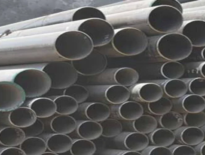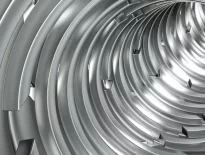ST52 stands out as one of the most frequently utilized low-carbon steels in various industries. Renowned for its exceptional weldability, ST52 finds extensive application in the fabrication of structural components and mechanical parts. In this article, we delve into the distinctive properties of ST52 and explore the prevalent welding techniques employed for processing this particular type of low-carbon steel.
The grading of steel is contingent upon the alloying elements present and the carbon content therein. While high-carbon alloyed steel tends to offer heightened durability, low-carbon steel like ST52 is favored for its ease of processing, particularly in common applications where intricate fabrication processes are involved.
Properties of ST52 Carbon Steel
ST52 is characterized by its low carbon content along with manganese content, contributing to its unique properties. It exhibits commendable impact resistance and material strength, making it suitable for a wide range of applications. The combination of durable properties and ease of processing renders ST52 a preferred choice across various industries.
In terms of physical resilience, ST52 demonstrates robust performance in parameters such as surface hardness and tensile strength. Moreover, its ductility allows for easy plastic deformation into desired shapes without necessitating heat treatment.
However, it’s essential to note that ST52 may not be the optimal choice for applications requiring high corrosion resistance. While it can withstand moderate levels of corrosive elements, it’s advisable to avoid extremely corrosive environments, particularly those exposed to humidity and saltwater. Nonetheless, the corrosion resistance of ST52 can be enhanced through precise application of surface coatings, leveraging its overall commendable physical properties.
One of the most remarkable characteristics of ST52 is its exceptional weldability. Structural elements crafted from ST52 through welding exhibit exceptional durability, with the material displaying excellent responsiveness to welding processes. As a result, ST52 stands out as a preferred material for elements requiring welding connections. However, it’s imperative to select the appropriate welding technique, as the choice of method is just as crucial as the material itself.
ST 52 Carbon Steel Specification
ST52 Material Overview: ST52 is a widely used low-carbon steel known for its exceptional weldability and suitability for structural components and mechanical parts. It is commonly employed in industries ranging from manufacturing to construction due to its favorable combination of properties.
| Standard | DIN 2391 |
| Grade | ST52 |
| Size | OD (4-190mm) x WT (0.5-15mm) |
| Outer Dimensions | 4.0mm – 60.0mm |
| Wall Thickness | 0.5mm – 8 mm |
| Length | max 6000mm |
ST 52 Chemical Composition
ST52 is primarily composed of low levels of carbon and manganese. This composition contributes to its excellent impact resistance and material strength. While it may not excel in corrosion resistance, ST52 showcases admirable physical attributes such as surface hardness and tensile strength.
| Standard | Grade | C | Si | Mn | P max | S max |
| DIN2391 | St52 | ≤0.22 | ≤0.55 | ≤1.6 | 0.025 | 0.025 |
ST 52 Carbon Steel Material Properties
One of the key characteristics of ST52 is its ductility, allowing it to be easily formed into desired shapes without requiring heat treatment. Additionally, its weldability stands out as a notable feature, making it a preferred choice for welded structural elements across various applications.
Welding Techniques for ST 52 Carbon Steel
When working with ST52 carbon steel, several welding techniques can be employed:
- Gas Tungsten Arc Welding (GTAW or TIG): This method, while time-consuming, delivers superior results and is ideal for applications where quality is paramount.
- Gas Metal Arc Welding (GMAW or MIG): Offering quick and efficient welding, the quality of GMAW welds depends on environmental conditions and the skill of the welder.
- Shielded Metal Arc Welding (SMAW or Stick): Although versatile and suitable for rapid applications, SMAW typically yields lower-quality welds compared to GTAW or GMAW.
Improving Welding Quality with ST 52 Carbon Steel
To enhance the quality and durability of welds involving ST52 carbon steel, several additional processes can be implemented:
- Preheating the Steel: Preheating helps reduce the risk of cracking and improves the quality of welds.
- Selecting the Right Electrode: Choosing the appropriate electrode is crucial for ensuring strong and durable welds.
- Controlling Heat Input: Proper heat control during welding minimizes distortion and the risk of cracking.
- Post-Weld Heat Treatment: This process can further enhance the strength and toughness of welds, reducing the likelihood of defects.
Conclusion
ST52 carbon steel’s versatility, coupled with its excellent weldability, makes it a favored material across various industries. By employing the correct welding techniques and supplementary processes, welders can ensure the successful execution of welding projects involving ST52, resulting in strong, durable welds that meet the requirements of demanding applications.
FAQ
- What is the ST52 grade of steel?
ST52-3 grade steel is a readily weldable low carbon manganese steel known for its good impact resistance, even in sub-zero temperatures. It is often supplied in either untreated or normalized conditions. - What is ST52 material?
ST52 is a frequently used low-carbon steel renowned for its weldability and versatility in manufacturing structural components and mechanical parts. This type of steel is known for its excellent weldability, making it a preferred choice for various industrial applications. - Is carbon steel stronger than steel?
Yes, carbon steel is generally stronger than mild steel. It can be up to 20% stronger, making it suitable for applications where high strength and hardness are required. However, this increased strength often comes with a higher cost compared to mild steel.


